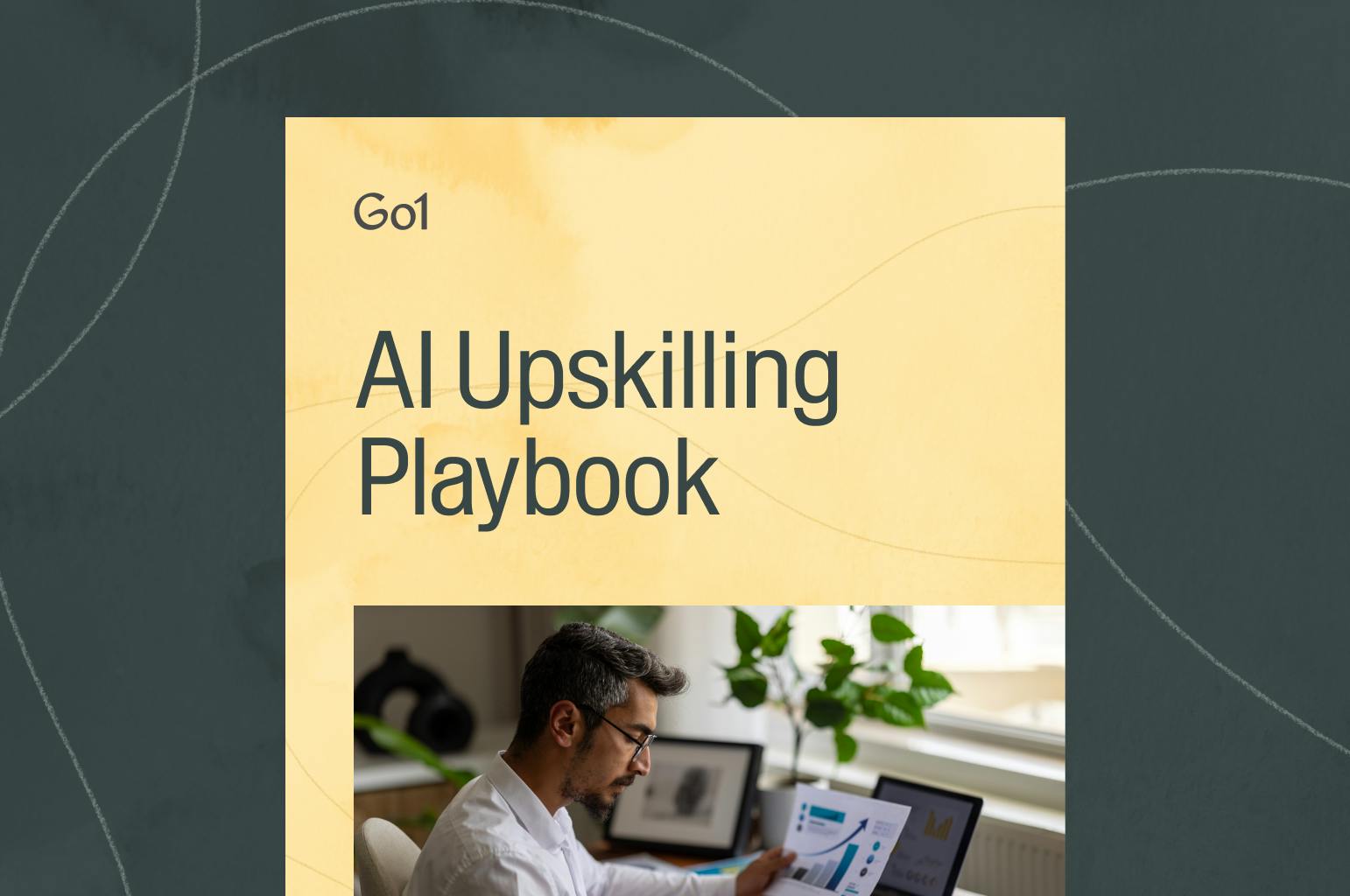Building a culturally responsive employee training program

Traditional teaching models typically use a top-down, one-size-fits-all approach, meaning that employees are taught uniformly. In essence, everyone receives the same curriculum regardless of their individual background, culture, or experiences.
One-size-fits-all training programs often operate the same way. Instead of treating employees as individuals, L&D programs — particularly in global organizations — typically only cater to the majority, delivering static content and measuring outcomes based on more homogeneous metrics. But while this approach is fairly common, it can exacerbate learning disparities and even lead to high employee turnover.
In this article, we’ll cover Gloria Ladson-Billings’ 1995 theory of Culturally Responsive Pedagogy (CRP), which offers a contrasting approach to one-size-fits-all learning. Plus, we’ll explain how any team can leverage her findings to create culturally responsive learning initiatives that work.
What's Gloria Ladson-Billings’ theory of culturally responsive pedagogy?
Culturally Responsive Pedagogy (CRP) is an educational approach that recognizes and leverages students' diverse cultural backgrounds as a strength in the learning process.
Coined by researcher Gloria Ladson-Billings in response to the United States' education system's failure to serve culturally diverse students (mainly Black students), CRP recognizes, respects, and incorporates students' varied experiences to enhance educational outcomes.

How can CRP improve traditional L&D?
While CRP has roots in K-12 education, the model is relevant for deploying inclusive, equitable, and successful L&D programs in organizations for professionals, too.
CRP, though, can help employers meet individual employees’ learning preferences, backgrounds, roles, and goals.
Applying CRP to the workforce can:
- Empower employees: Not only can CRP inspire instructional designers and learning leaders to acknowledge diversity and inclusion in their programs, but they can also make diversity and inclusion the core strengths of an organization, creating a culture of empowerment.
- Engage employees: One-size-fits-all programs fail when they aren’t relevant to the employees partaking in them. A CRP model, however, encourages L&D programs to be tailored to individuals, which in turn can motivate employees to actively engage.
- Educate employees: CRP incorporates sociopolitical consciousness as a key part of learning success, which encourages employees to question and understand societal structures and inequalities. In L&D, this can translate to training programs that not only focus on skill development but also emphasize social and political responsibility in and out of the workplace.
- Connect employees: The CRP model, which has been shown to improve empathy in students, can achieve the same results at work, creating greater understanding among employees.
How to create culturally responsive training initiatives, in five steps
Incorporating CRP into your organization can feel a bit overwhelming. But with the right tips and tools, you can get set up for success in no time.
1. Conduct a learning needs assessment
The only way to develop a culturally responsive L&D program is to first understand exactly who your employee base is and how they’re performing in terms of skill development — and why.
To do this, you’ll need to collect both quantitative and qualitative data by conducting a learning needs assessment:
- Qualitative data: Survey employees to gather information about their cultural identities, language preferences, and prior learning experiences. Likewise, interview stakeholders (employees, managers, or community leaders) to understand cultural factors that may be hindering learning.
- Quantitative data: Analyze workforce demographics to identify patterns of cultural diversity and inclusion gaps (completion rates, career advancement, etc).

2. Integrate culturally relevant content
Regardless of the learning objective, your training program should resonate with employees no matter their background.
To accomplish this, ensure your content is:
- Diverse: Ensure that the training software you’re using offers a highly diverse course offering for training content. With a content aggregator like Go1, you can give your employees access to a range of culturally relevant courses, relatable scenarios, and imagery that reflect the lives of your employees.
- Inclusive and accessible: All of your training material should avoid stereotypes or cultural assumptions. Instead, it should incorporate culturally sensitive and diverse language. Likewise, courses should include visual content and audio and follow accessibility guidelines like WCAG.
- Hyper-relevant: Successful CRP incorporates the current sociopolitical climate into the learning environment. The content you deploy in your L&D program should reflect not only the lived experiences of employees but also real-world news and updates.
3. Foster collaboration
Real learning thrives on social interaction — and so does fostering an inclusive, diverse, and equitable organization. When employees interact and cross-collaborate, they’re more likely to understand and value one another and build cultural competence, all of which create a more equitable workforce for everyone.
To build a culture of collaboration, be sure to:
- Use peer-to-peer learning: Leverage training software that facilitates real-time and asynchronous dialogue so employees can discuss topics with one another, ask questions, and learn from each other.
- Encourage leadership: A key component of CRP is fostering and nurturing individual strengths. Encourage your employees to conduct workshops or learning sessions for other employees about a topic or skill they’re well-versed in.
- Encourage cross-departmental collaboration: Just because an employee is on one team doesn’t mean they don’t have a particular skill set that could benefit another. Encourage employees to assist in cross-departmental projects where they can leverage their unique skills.
4. Reimagine learning
Just like Billings discovered, a one-size-fits-all curriculum can leave certain employees behind while others advance ahead, creating major learning disparities.
To accommodate differences and foster a genuinely inclusive and diverse learning approach, be sure to:
- Adapt formats: Offer employees various ways to learn (visual, auditory, hands-on) so that they can choose the method that works best for them.
- Offer tailored material: Give employees the ability to access a personalized learning path that’s custom-fit to their goals and challenges. It should be relevant to their roles, strengths, backgrounds, and skill gaps.
5. Consider new metrics of success
One-size-fits-all programs tend to measure employee learning outcomes against one homogeneous evaluation criteria, which doesn’t account for individualism.
For a CRP approach to be successful in any employee training environment, people development teams should reimagine their evaluation practices. Metrics to consider looking at could include:
- Career progression for underrepresented groups
- Improvements in cultural awareness and sensitivity
- Reduction in unconscious bias
- Success of diverse team collaborations
- Pay equity progress
- Retention rates for diverse talent
Bringing cultural responsibility to employee L&D
With the right tools and best practices, any organization can create a culturally responsive employee training program and ensure that diversity and inclusion are the strongest parts of their operation.
With Go1, organizations can access a diverse offering of compliance, training, wellness, and upskilling content that can be paired down to meet the unique needs of individual employees — inclusive of their learning preferences and cultural backgrounds.
Ready to see Go1 in action? Book a personalized demo to discover how our platform can transform your L&D strategy.
Related Articles

Application Guide: How to use the Go1 AI for L&D Maturity Assessment to assess our workforce AI capability

AI upskilling made clear: A practical guide to building an AI-ready workforce

Go1 welcomes PepTalk

5 Data-Backed Insights Shaping the Future of AI in Workplace Learning

Train smarter, spend less
Train smarter,spend less
Connect with a Go1 expert to explore the best training options for your organization—no pressure, just solutions that work.